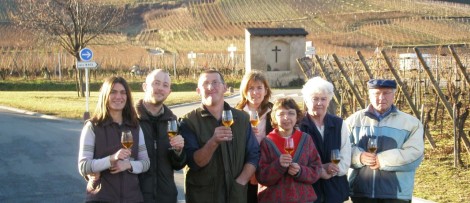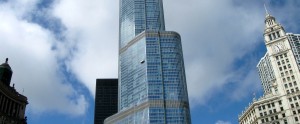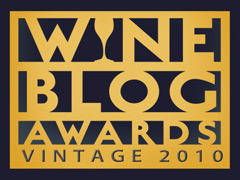Category Archives: France
July 27, 2012 Domaine Jean-François Ganevat
Domaine Jean-François Ganevat J’en Veux!!!
France (Jura)
17 native varietals!!! including l’enfariné, corbeau, gueuche, portugais blue, gouais, beclan. argant, seyve-villard
[no website]

A recent trip brought a one day, pre-Olympic stopover in London. There’s a terrific venue for lovers of natural wines on William IV Street, near Trafalgar Square. It’s called Terroirs and the charcuterie plate (salami, duck rillettes, pork and pistacho terrine) proved exceptional. As for the wine — a brilliant discovery from Jura.
Domaine Jean-François Ganevat J’en Veux!!! 2009
This has the wine character I love. Fresh, earthy, seemingly little removed from the end point of vinification. Lively and unpretentious, all about the natural evolution of the grapes into wine. Unfined, unfiltered, unsulfured, and I’m thinking with traits that marked wine centuries ago. ‘Delicious’ might sound pedestrian, but indeed, had I more time in the city, I would have been tempted to sit and linger over the whole bottle. $$
 J’en Veux!!! is one of an average domaine production of some 40 wines. All from a mere 8.5 hectares, with each parcel vinified separately. Very labour intensive, with eight people employed full time. In charge is Jean-François Ganevat (“Fanfan” to his friends) with roots in the region going back to 1650. Here, in underappreciated Jura (lying between Burgundy and Switzerland), there are varietals unknown anywhere else, and whereas Ganevat has managed to hold on to many of them, they have largely disappeared from other domaines, making way for AOC favourites pinot noir and chardonnay.
J’en Veux!!! is one of an average domaine production of some 40 wines. All from a mere 8.5 hectares, with each parcel vinified separately. Very labour intensive, with eight people employed full time. In charge is Jean-François Ganevat (“Fanfan” to his friends) with roots in the region going back to 1650. Here, in underappreciated Jura (lying between Burgundy and Switzerland), there are varietals unknown anywhere else, and whereas Ganevat has managed to hold on to many of them, they have largely disappeared from other domaines, making way for AOC favourites pinot noir and chardonnay.
Roughly a thousand litres of this wine were made, on a plot of ungrafted vines behind Ganevat’s house, vines as much as a hundred years old. All the wines amount to micro-cuvées, some made up of no more than a single cask. In total only two thousand cases of wine leave the domaine each year. Ganevat is incredibly dedicated (some would say mad) to undertake production on this scale. The domaine is something of a maze of small buildings, cask rooms and cellars in the southern Jura hamlet of La Combe. Life here is well out of the wine mainstream.

Until 1976 income from winemaking was augmented by the production of the region’s famous cheese, comté. By 1998 Jean-François had completed wine studies in Burgundy and worked for ten years at the famous Domaine Jean-Marc Morey. He wanted to return to the family property in Jura. His experience at Morey led him to biodynamics, and it is said a Burgundian approach to winemaking.
Ganevat is a perfectionist. One estate wine each year undergoes particularly stringent destemming. Using scissors, each grape is removed from the cluster, leaving only the tiniest tip of the stem. In 2009 that wine was J’en Veux !!! The grapes are then put directly into the barrel. Vinification occurs within the skin. No pressing, no punchdowns, no pumpovers.
The result: absolutely delicious.

As I leave Terroirs I see by the blackboard that Ganevat’s wine is in very good company.
Tags: biodynamic wine, Domaine Jean François Ganevat, J'en Veux !!!, Jura, Kevin Major, organic wine, Terroirs London, Vinland
- Leave a comment
- Posted under biodynamic wine, France, organic wine
July 13, 2012 Domaine Dider Dagueneau
Domaine Didier Dagueneau Silex
France (Loire)
sauvignon blanc
[no website]

He was the iconoclast of the Loire Valley, the wild-haired winemaker who knew no equal when it came to sauvignon blanc.
Tragically he died in 2008 at age 52, while piloting an ultralight plane that stalled shortly after take-off, in the Dordogne area of southwest France.
This was his last vintage of his premium, benchmark Silex.

The Loire had not seen his like before – a motocross racer turned vigneron, with no formal training in viticulture. He set his wine wheels in motion in 1982 with less than two hectares of vines and a determination to make the best sauvignon blanc possible. He was a tireless experimenter and risk-taker (he also raced dog sleds in Slovenia), and the Pouilly-Fumé appellation hardly knew what to make of him. Over time the vineyards expanded to 12 hectares, and the quality of the wine shot up to a level that far outdistanced most of his competitors. He was not adverse to publicly explaining why, making few friends among his wine-producing neighbours.
 Didier Dagueneau grew up in Burgundy, and came to reside in the town of Sainte-Andelain, on the opposite side of the Loire river from Sancerre. It was there that the wine world gathered for his generous tastings and his far-ranging opinions. He was never lost for words, though they could be tempered with an eye-twinkling mischievousness. An encounter with Dagueneau was never less than memorable.
Didier Dagueneau grew up in Burgundy, and came to reside in the town of Sainte-Andelain, on the opposite side of the Loire river from Sancerre. It was there that the wine world gathered for his generous tastings and his far-ranging opinions. He was never lost for words, though they could be tempered with an eye-twinkling mischievousness. An encounter with Dagueneau was never less than memorable.
His renowned cuvée, Silex, is made from the very low yields of 40-75 year-old vines, grown in dense clay soil on the upper part of the Sainte-Andelain hillside, soil very rich in flint (silica). Horses are known to plow between the vines. Harvest is by hand, with multiple passes through the vineyard to gather the fruit at its prime ripeness. Vineyard practices have been organic for decades, verging on biodynamic. Modern technology, however, is not discounted — wireless meteorological units monitor essential information about vineyard conditions, including temperature, wind speed, humidity levels. In the spotlessly clean chai, the wine comes under the oak influence of large (400-litre) cigar-shaped demi-muids, designed for maximum lees contact.
 Since the death of their father, it has been Charlotte and Benjamin Dagueneau at the helm. And all indications are that the latest vintages have been as exceptional as in previous years. Says Benjamin, the aim is for “freshness and tension” in the wines, as well balance, the distinct mark of the terroir, and drinkability. “The sign of a good bottle is that you want to finish the whole thing.”
Since the death of their father, it has been Charlotte and Benjamin Dagueneau at the helm. And all indications are that the latest vintages have been as exceptional as in previous years. Says Benjamin, the aim is for “freshness and tension” in the wines, as well balance, the distinct mark of the terroir, and drinkability. “The sign of a good bottle is that you want to finish the whole thing.”
My wife and I agree totally. And it is a very significant anniversary, and it is Raymond’s restaurant. And we do want others to sample it, too. It doesn’t last long.
Domaine Didier Dagueneau Silex 2007
Light gold with a tinge of green, it sits in the glass with a stunning first course. There is equal anticipation for both.
The nose evolves in such wonderfully interesting ways throughout the meal, from notes of blue cheese and sauterne to something altogether softer, honeyed and radish-like. On the palate it is silken, remarkably complex, mineral-driven but fresh and pure. It takes the drinker to where the sun shines on a spring day, opening wine worlds never before explored. Splendid! $$$

Tags: Benjamin Dagueneau, Charlotte Dagueneau, Didier Dagueneau, Kevin Major, Loire, organic wine, Silex 2007, Vinland
- 2 comments
- Posted under France, organic wine
June 15, 2012 Domaine Plageoles
Domaine Plageoles Vin d’ Autan
France (Gaillac)
ondenc

I’ve had this bottle for several months, anxious for the right opportunity to sample it. What to pair it with?
How about ice cream? But not just any ice cream. I’ve recently indulged myself with an ice cream maker, on the heels of acquiring “Jeni’s Splendid Ice Creams at Home.” Whoa. For someone with a weakness for ice cream, this book is a godsend. What fun I’ve been having, most recently with mint from the garden, fine chocolate and curry powder, and star anise and candied fennel seed. Store-bought will never do it for me again!
Domaine Plageoles Vin d’ Autan 2000
A sunny apricot glow in the glass, holding forth with a creamy rich and balanced blend of honeyed fruits – dried apricot and quince. An elegant sweet wine, one to linger over, to meditate on, and to revisit. To sip, to savour on its own. A piece of history $$
The 2000 is not considered one of the premier vintages of this wine, but there is more than enough magic in this bottle to embrace Domaine Plageoles wholeheartedly. There is something unique at work here, something revived that was close to extinction.

It starts with Robert Plageoles, the most renowned winemaker in Gaillac, that little-known region of France northeast of Toulouse. Wine production here dates back more than two millennia, but which in recent decades had succumbed to the lure of international, commonplace grapes. Plageoles, tireless researcher of indigenous varietals that through time and phylloxera had nearly vanished, has brought back into production over a dozen of them including ondenc, the grape used in the making of this premier sweet wine. A wine he calls “the wine of the wind and the soul.”
Today, his son Bernard Plageoles continues and expands the tradition. Together they are prime advocates for a return to traditional, natural wine making. The 23 hectares of the organic Domaine Plageoles produce some 14 different historic Gaillac wines, all single varietals.
None is more sought after than Vin d’ Autan. The unique treatment of the grape results in something very special. The vines are trained in goblets, as tradition dictates. All but four stalks are green harvested in late July. Then, when the grapes are ripe, workers go through the vineyards and pinch each stem with pliers to stop the flow of sap. The grapes wither and, with the help of the southeast Autan winds, slowly dry out, their sugars now highly concentrated. Hand picked, the grapes are allowed to dry further on special tables. Once pressed, they are fermented (using only natural yeasts) in concrete vats, where they remain for 12 months.
At which point the wine is bottled as Vin d’ Autan, the best sweet wine of Gaillac, and one of the best in the whole of France. Great with blue cheese and foie gras. And might I add, equally so with distinctive ice creams.

Tags: Bernard Plageoles, Domaine Plageoles, Gaillac, Jeni's Splendid Ice Creams at Home, Kevin Major, organic wine, Robert Plageoles, Vin d'Autan 2000, Vinland
- Leave a comment
- Posted under France, organic wine
June 1, 2012 Domaine Binner
Domaine Binner Saveurs
France (Alsace)
sylvaner, auxerrois, gewurztraminer, pinot gris
The meal at goosefoot started with a mere spoonful, an amuse-bouche.

From beginning to end an extraordinary dining experience in Chicago.

The restaurant is BYOB, and our pairing — an exceptional Alsatian white from Domaine Binner.

Domaine Binner Saveurs 2009
An aromatic apple-like nose, the gewurz coming through nicely, with notes of caramel. The taste is rich and multi-layered, but not sharply defined as you might expect of a Binner grand cru, for example. A true field blend. With a lightly-buttered, salt-flavoured finish. A perfect wine for a tasting menu, fitting the groove of so many dishes. Lovely! $
The inspired forces behind the domaine are Audrey and Christian Binner (left), with the whole Binner family an integral part of the domaine team. Set in the heart of Alsace, in the small town of Ammerschwihr, the property has been producing wine since 1770. Today the Binners, with a mere 11 hectares under vine, produce approximately 60 different bottlings, including a number of grand crus. There is a wide variety of terroirs, all with a foundation of granite soils. Vines are 30 years old on average, with some parcels more than 70.

Christian’s grandfather was one of the very few vineyard owners prior to WWII bottling his own wine. When the domaine fell to Christian’s father after the war he resisted the widespread move to chemical treatments and mechanization. And by the time Christian himself took over in 1998, the property already had a long history of organic cultivation. He went a step further and moved the winery to biodynamics, and with the advice of people like the late Marcel Lapierre of Beaujolais, learned vinification without the use of sulphur, and without filtering.
The creed of Domaine Binner: “Wine is made in the vineyard, not in the cellar.” It is the terroir that defines the wines. The owners are not looking for uniformity, but wines that reflect the soils and the growing condition of a given year. They harvest the grapes by hand along the steep vineyard slopes, and only when fully-ripened, which often means October and well past the time surrounding domaines conduct their harvests.
Pneumatic pressing is slow and gentle. No added yeast. Slow fermentation (often lasting more than six months) and at low temperatures, fermenting out as much sugar as possible. At least eleven months on the lees in large, century-old oak foudres, followed by an average of 3 years cellar aging in the bottles before release.
In the mind of Christian Binner, it is viticulture as nature intended, “…viticulture that respects humanity the most, as well as one’s health and that of our planet.”
Noble notions. Exceptional wines.
Tags: Audrey Binner, biodynamic wine, Christian Binner, Domine Binner Saveurs 2009, Kevin Major, organic wine, Vinland
- Leave a comment
- Posted under biodynamic wine, France, organic wine
May 4, 2012 Domaine Vacheron
Domaine Vacheron Sancerre
France (Loire)
sauvignon blanc
[no website]
Last week was spent in Chicago. A striking city in so many ways.

Not least of which is its dynamic culinary scene. Lunch at Blackbird was a highlight, each dish exceptional, as was the wine we paired with them.
Domaine Vacheron Sancerre 2010.
A mild golden glow. An appealing, subtle zest on the nose. A crisp, lemon punch, the first sip juicy but showing definite edges. Laced with fresh minerals, displaying a bright energy. Sharply anticipating the sturgeon, the octopus, the white asparagus. $

Almost all, roughly 45 hectares, of Domaine Vacheron’s vineyards are to be found on the outskirts of the French village of Sancerre itself. The Vacheron family has had a wine presence here for generations, and is one of the few remaining family domaines to still be centred in the town. Today it’s two brothers, Denis and Jean-Louis, and increasingly their two sons, Jean-Laurent and Jean-Dominique, who run the estate. In many ways their methods are those of the winemakers who have gone before them — hand harvesting, hoeing of the soils, low-pressure pressing. But today it is not out of necessity, but because the estate has embraced biodynamics, an initiative of the two cousins. They have stepped up the game at Domaine Vacheron and the estate’s wine have never been better.
 Domaine Vacheron works wonders with pinot noir, particularly its Belle Dame cuvée, and also produces a single-vineyard sancerre, the heady “Les Romains”. But fully three-quarters of the vineyards are devoted to their regular sancerre, what Jean-Dominique calls their “first priority.” It is a polished blending across their terroir , and as the domaine’s starting point it sets the bar high.
Domaine Vacheron works wonders with pinot noir, particularly its Belle Dame cuvée, and also produces a single-vineyard sancerre, the heady “Les Romains”. But fully three-quarters of the vineyards are devoted to their regular sancerre, what Jean-Dominique calls their “first priority.” It is a polished blending across their terroir , and as the domaine’s starting point it sets the bar high.
The soil in which it grows is an even combination of limestone and flint. The yields are restricted, and there are several returns to the vineyards through September so only fruit at its optimum level of ripeness is picked. There it is sorted before being transported inside in small crates. Following pressing, the juice is gravity-fed into stainless steel tanks for fermentation. It is aged for 8 months before bottling.
The major influences on winemaking at Vacheron are Burgundian. There is movement towards vinifying the best parcels within the vineyards separately, of aging these wines in both tank and large wooden barrels, as well as varying the blending of the regular cuvées from year to year. As Jean-Dominique contends, their best work with sauvignon blanc is yet to come.
Leaving the restaurant with the empty bottle I had in mind a spot that reflects the wine’s steely polish, its bright future. What else — Anish Kapoor’s famed sculpture Cloud Gate, “The Bean”.

Tags: biodynamic wine, Denis and Jean-Louis Vacheron, Domaine Vacheron, Jean-Dominique, Jean-Laurent, Kevin Major, organic wine, Sancerre 2010, Vinland
- Leave a comment
- Posted under biodynamic wine, France, organic wine
